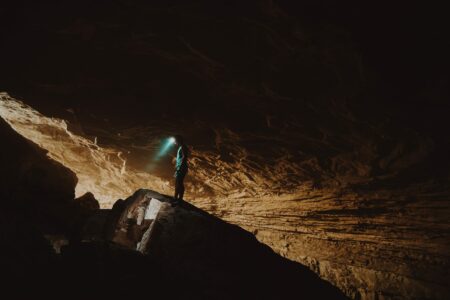Caving is an extremely fun and exciting activity to participate in. It’s not for everyone, but it definitely has its own large community, which is made up of people known as spelunkers! People of all skill levels are involved in caving, and for many it is an unrivaled source of both excitement and exercise. Join us as we explore the aspects of caving and what you should know about it!
Why Do People Like Caving?
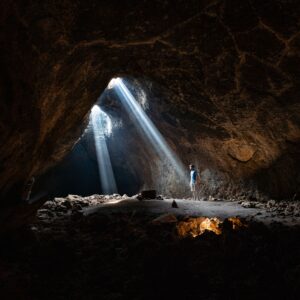
There are a variety of reasons, spanning from differing degrees of personal betterment to great exploratory ambitions. Here are are some of the primary draws:
Fitness
Caving, especially that which is more advanced, requires considerable training of virtually every muscle group in one’s body. Going on any sort of caving expedition is sure to be a full-body workout and the more trained you are, the more you can do. It especially requires a great deal of upper body and core strength, as these are the areas that will be facilitating the most movement around a tight area.
Cardio actually plays an important role as well, and this is because some tighter areas require much more strenuous activity and they are not always places to rest or catch your breath. However, these risks tend to be in more advanced caving areas and there will be warnings of such conditions prior to entry in the vast majority of locations.
Personal Accomplishment
Caving is a superb example of an activity that allows one to set very specific and achievable goals for themselves, and then work towards completing them. For avid spelunkers, the amount of personal fulfillment gained from caving is unparalleled. With enough exercise and training, a cave that seemed once impossible to traverse can become not only doable, but easy!
Though it should be noted that danger levels do of course go hand in hand with difficulty. There truly is no end to the range of caves and the level of expertise they require to explore. Caving provides spelunkers with a virtually never-ending source of personal improvement, as there is always something more to work up to.
Exploration
Being a true explorer is exceedingly difficult these days. It often seems like everywhere is already mapped out, and it is impossible to be the first one somewhere. Caving allows a unique opportunity for someone to realize this elusive reality. Many firmly-established cave systems have vast areas that remain totally unexplored, and it is often up to spelunkers (certified and permitted, of course) to chart these unmapped areas.
It does not have to be this dramatic, of course. There may be a small local cave or cavern you know of that seemingly nobody has been in. This also is an opportunity for exciting exploration, but absolutely do not set out on any sort of trip until you have been prepared with extensive and proper knowledge of the type of area you are exploring, you have all the proper safety equipment, and you have some sort of support system (both mechanical and social) making sure that you are safe and that there is someone who can help you if you need it.
Research
Caving is quite necessary for much geological and topographical study, as well as certain studies in chemistry and biology fields. It is not uncommon, then, for a field geologist to go spelunking in a cave system in order to learn more about it as well as the properties of its makeup.
How Do You Get Started with Caving?
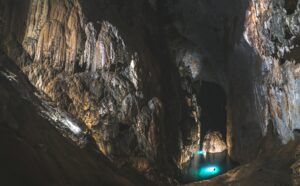
It’s not hard to see why caving is so important to so many people! If you believe yourself to potentially be one of these people that would enjoy this activity, you most likely are wondering about how to start. Here are some things to remember and consider:
Training
In order to get into caving, it is essential to find somewhere to learn. There are specific places made for this exact purpose, and they are called grottos. There are multiple grottos in every state, so it should not be very difficult to find one to start at.
These are places run by caving organizations staffed with caving experts who can tell you everything you need to know as well as give you lessons and/or certification courses if you are looking for some serious trips. Grottos also are largely responsible for organizing many of the caving trips available throughout the US, so they are great places to get in contact with if you are looking to do a beginner trip.
Equipment
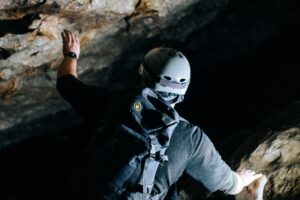
Equipment goes directly with safety when it comes to safety, so here are some absolute essentials to acquire before setting off on any sort of trip:
- A partner
- We know that humans aren’t exactly “equipment,” but you should NEVER go caving without a partner. They can be the key to getting you out from a situation where you are between a rock and a hard place (literally).
- Fairly insulated clothing
- The majority of caves during prime seasons will have temperatures falling between 50 and 60 degrees Fahrenheit, so it is important to have clothing that will be cool enough to vent excessive body heat but warm enough to keep you comfortable in cool and damp conditions.
- Knee pads
- Everything around you is going to be hard, and most of it is probably going to be rough and/or sharp to a degree. Keep those knees happy.
- Grippy hiking boots
- It is crucial to have boots for caving that are capable of both supporting your feet through extensive activity and gripping firmly onto any surface. It is not difficult to imagine how awful any sort of caving would be with slippery boots!
- Gloves
- These are optional – it all depends on the texture of the rock you’ll be caving in. But they can really help because you might need to abruptly grab on to sharp edges, and you won’t always be able to control where you place your hand.
- Protein bars or other “lightweight, energy-packed” nutrition
- A light. Caves can be dark – really dark. I recommend two lights – a good headlamp and a small backup flashlight.
- Water
- First Aid kit
- Whistle
- A hard chin strap helmet with a mounted headlight and extra bulbs/batteries
- This keeps you protected while also allowing both hands to be free.
Where Can You Go Caving?
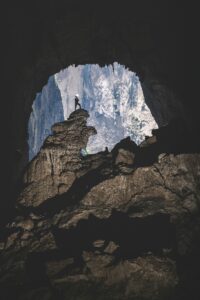
You now know all you need to know as a baseline for getting into caving. This naturally raises a very important question: where are the best places to make trips to? In general, the northwestern and southwestern US have some of the best caving spots. We put together a little list containing five of our favorites from those areas:
Ape Cave, Washington
Formed by an eruption from Washington’s own Mount St. Helens over 2000 years ago, Ape Cave is composed of an impressive 2.5-mile lava tube cave that is the largest in the Northern Hemisphere. It offers compelling views as well!
Carlsbad Caverns National Park, New Mexico
Featuring over 85 caves, this national park is a terrific destination for all things caving. There is an endless amount of area to explore, including Carlsbad Caverns and Lechuguilla Cave!
Mammoth Caves, Kentucky
This is the largest cave system on the planet, containing over 360 miles of tunnels and caves. It has everything from single-person tunnels to family-friendly inner-cave ziplines. Definitely a must-see!
Jewel Cave, South Dakota
Continually being mapped, this cave system has hundreds of miles of tunnels discovered and uncounted more to be found. It is currently the third-longest continuous cave in the whole world.
Oregon Caves National Monument, Oregon
Oregon has long been renowned for its fascinating cave systems, and the Oregon Caves National Monument is no exception. Bursting with underground beauty and complexity, this location is sure to satisfy. On top of that, it is closely related to the setting of the film “The Goonies!”
Which will you be visiting first?

